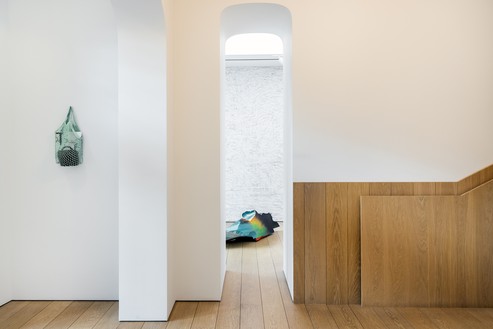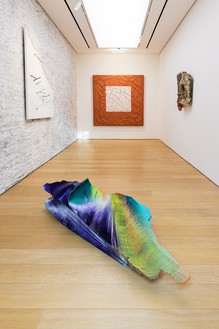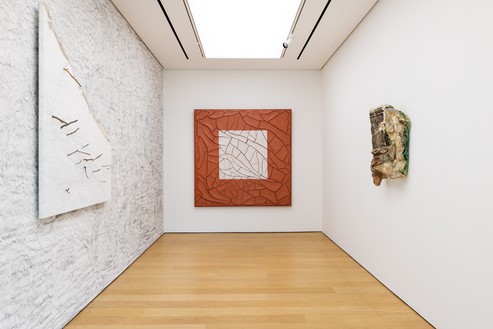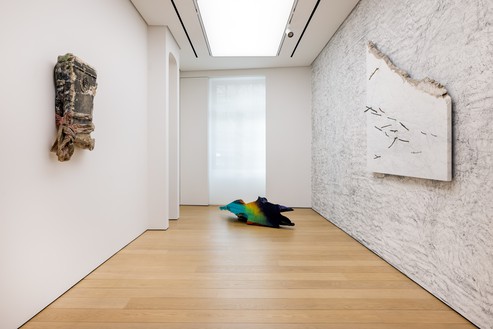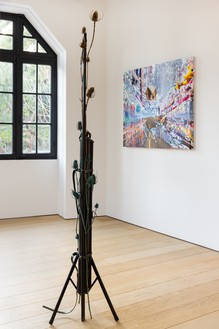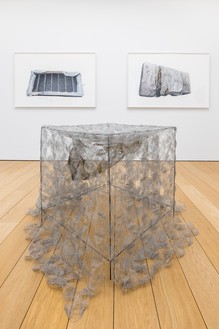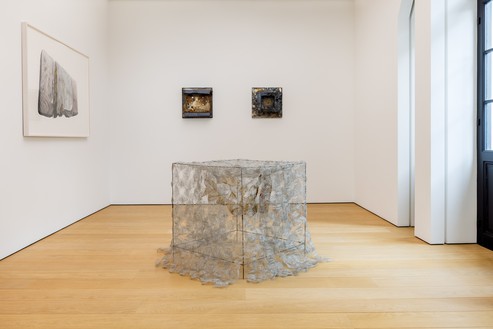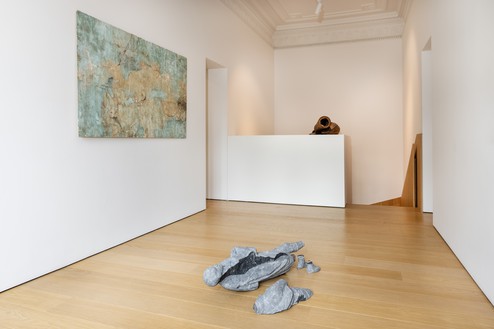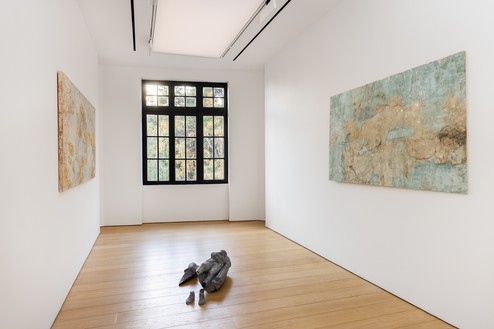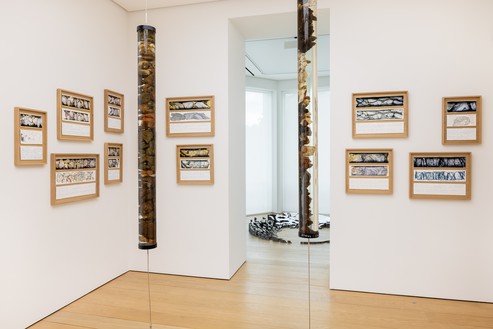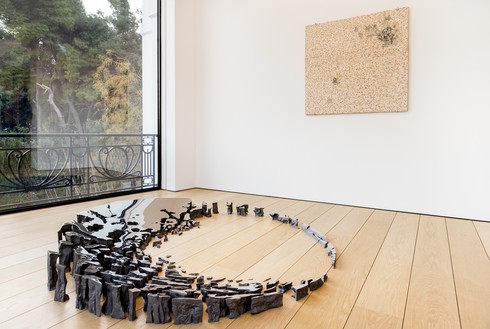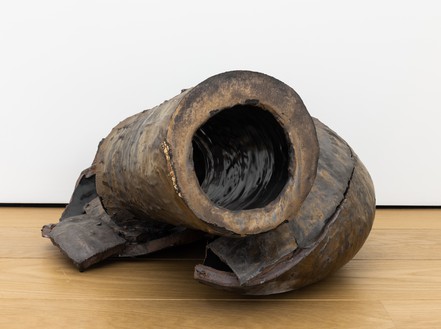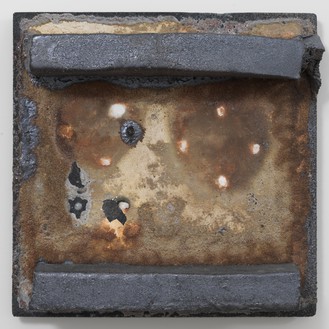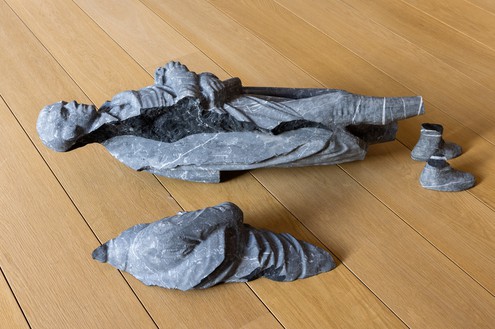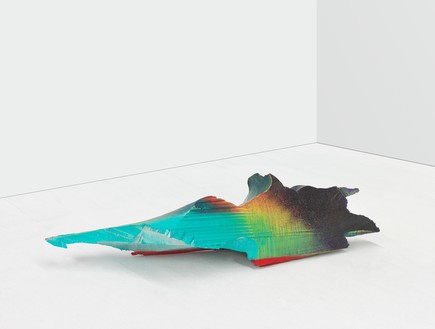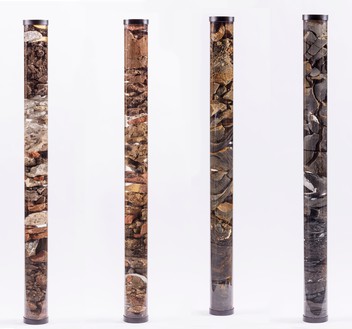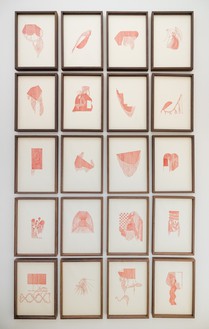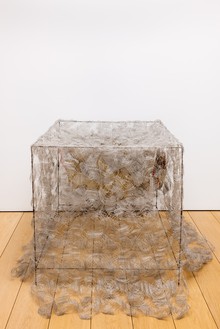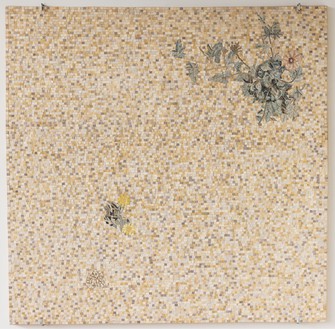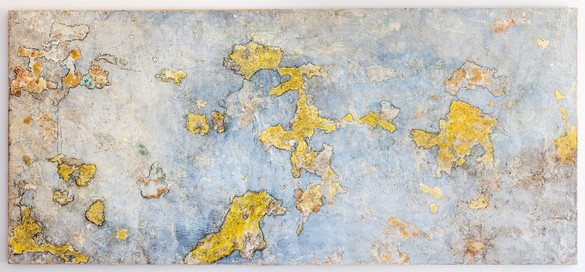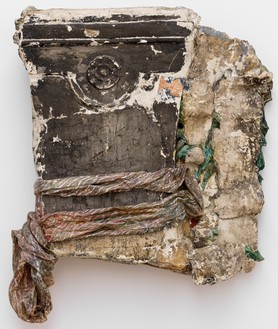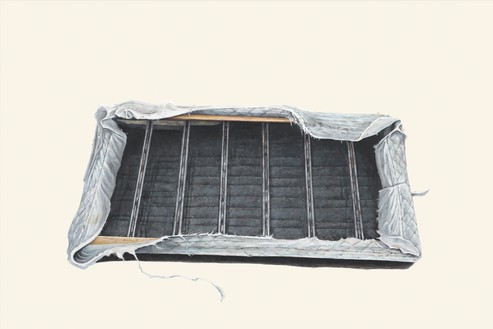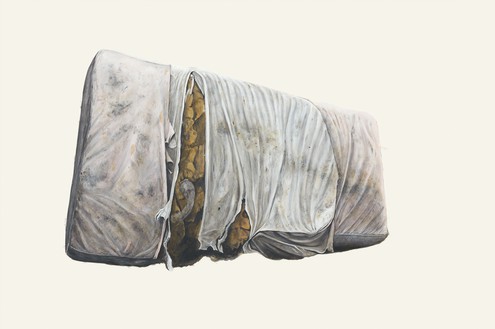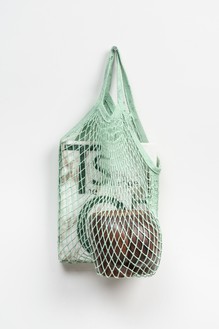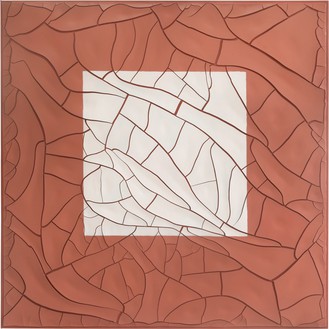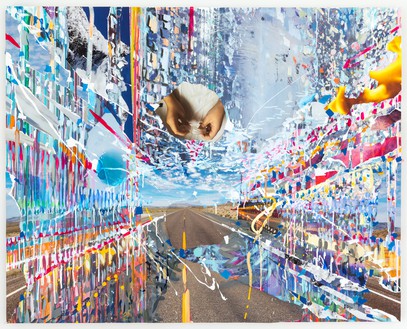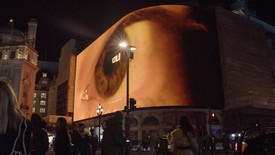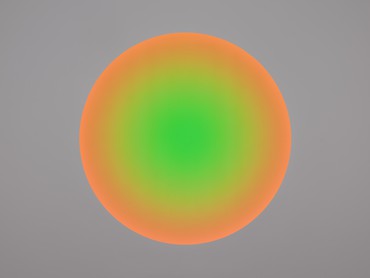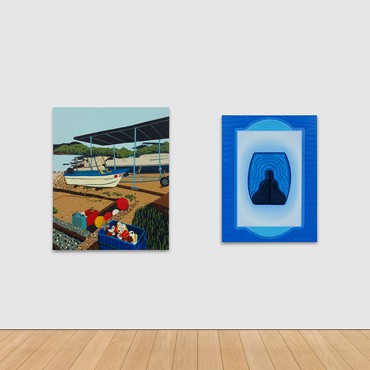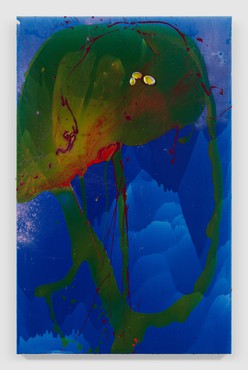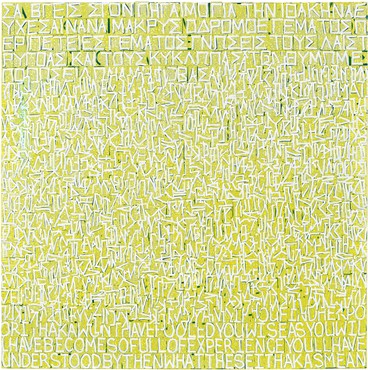About
I went in search of myself.
—Heraclitus, Fragment
We might be at the end of our Rome.
—Ed Ruscha
Gagosian is pleased to present a group exhibition that brings together richly varied works by international, regional, and local artists that reflect on the poetic power of ruins and fragments—in the city of Athens, a thriving contemporary metropolis charged with the traces of ancient histories. For some of these artists, this will be the first time that their work will be seen in Greece. Ruins and Fragments is organized by Louise Neri and Christina Papadopoulou.
Architecture, sculpture, and material culture in states either ruined or incomplete stimulate the mind to imagine what might have been, or could be, in the elusive human quest for certainty and completeness. Ed Ruscha is drawn to desolate and melancholy places, to voids both physical and spiritual. Throughout his career, he has found countless new ways to depict these landscapes with “no past—just what passes for a future.” In the Metro Mattress paintings (2015), working in acrylic on paper, he depicts derelict bedding and wrecked box springs, discarded on the streets of Los Angeles, isolated in empty white space. These unlikely characters slump and sag with age, their rips and stains attesting to the bare life they once supported. For Rena Papaspyrou, the city of Athens is a perpetual site of experimentation as well as the material and conceptual source of her art. In works such as Image through Matter and Geography (Images through Matter) (both 1981), she removed the cutaneous layer of wall segments and modified them with pencil or marker, reconstituting them as autonomous artworks that possess the visual complexity of maps or abstract paintings, wherein the viewer can discover images ingrained in surfaces by the actions of time.
’Εδιζησάμην ἐμεωυτόν.
—Ηράκλειτος, Απόσπασμα
Ίσως και να βρισκόμαστε στο τέλος της Ρώμης μας.
—Ed Ruscha
Η Gagosian είναι στην ευχάριστη θέση να παρουσιάσει μια ομαδική έκθεση που συγκεντρώνει μεγάλη ποικιλία έργων διεθνών, περιφερειακών και εγχώριων καλλιτεχνών που αντανακλούν την ποιητική δύναμη ερειπίων και θραυσμάτων—στην πόλη της Αθήνας, μιας σύγχρονης μητρόπολης που πάλλεται από ζωή αλλά και από τα ίχνη ιστοριών της αρχαιότητας. Το έργο για κάποιους από αυτούς τους καλλιτέχνες παρουσιάζεται για πρώτη φορά στην Ελλάδα. Η έκθεση Ruins and Fragments διοργανώνεται από τη Louise Neri και τη Χριστίνα Παπαδοπούλου.
Η αρχιτεκτονική, η γλυπτική και ο υλικός πολιτισμός όταν βρίσκονται σε κατάσταση ερειπιώδη ή ημιτελή διεγείρουν το νου ώστε να φανταστεί αυτό που θα μπορούσε να είχε υπάρξει, ή που θα μπορούσε να υπάρξει, στην απατηλή αναζήτηση του ανθρώπου για βεβαιότητα και πληρότητα. Ο Ed Ruscha έλκεται από τους ερημωμένους και μελαγχολικούς τόπους, τα κενά, υλικά και πνευματικά. Στη διάρκεια της σταδιοδρομίας του έχει βρει αναρίθμητους τρόπους να εικονίσει αυτά τα τοπία που «δεν έχουν παρελθόν—παρά μόνο κάτι που υποδύεται ένα μέλλον». Στη σειρά Metro Mattress (2015), δουλεύοντας με ακουαρέλες σε μεγάλα φύλλα χαρτί, απομονώνει παρατημένα στρώματα και ξεχαρβαλωμένους σομιέδες—που κάποιοι πέταξαν στους δρόμους του Λος Άντζελες—πάνω σε κενό λευκό χώρο. Αυτοί οι απροσδόκητοι χαρακτήρες βουλιάζουν και διπλώνουν με τα χρόνια, με τα σκισίματα και τους λεκέδες τους να στέκουν μάρτυρες της απεκδυμένης ζωής που κάποτε υποστήριζαν. Για τη Ρένα Παπασπύρου, η πόλη της Αθήνας είναι μόνιμος χώρος πειραματισμού καθώς και η υλική και εννοιολογική πηγή της τέχνης της. Για έργα όπως το Εικόνα στην Ύλη (1981) και Γεωγραφία (Εικόνες στην Ύλη) (1981) αφαίρεσε σαθρά επιχρίσματα τοίχων και επενέβη με μολύβι ή μαρκαδόρο, προχωρώντας στην ανασύστασή τους σε αυτόνομα έργα τέχνης που έχουν την οπτική πολυπλοκότητα χαρτών ή αφηρημένης ζωγραφικής, στα οποία ο θεατής μπορεί να ανακαλύψει τις εικόνες που έχουν αποτυπώσει στις επιφάνειες οι ενέργειες του χρόνου.
Για το Brick Reliquaries (2020), ο Theaster Gates πειραματίστηκε στο εργαστήριό του στο Σικάγο με το σημείο θραύσης του πηλού. Αυτά τα στοιχειώδη ανάγλυφα, φτιαγμένα από άψητα τούβλα και μαγγάνιο, έχουν εκτεθεί σε θερμοκρασίες πολύ υψηλότερες από τα συνήθη όρια. Στην πορεία, το υλικό αρχίζει να ενδίδει και να καταρρέει, καθώς οι γνωστές του ιδιότητες μεταμορφώνονται στα μυστήρια της γλυπτικής που γεννά η θερμότητα. Βρίσκοντας εναλλακτική δημιουργική δυνατότητα σε ό,τι έχει περισσέψει από το εργαστήριο, η Cristina Iglesias οικοδομεί σχηματικά μοντέλα από χαρτόνι και άλλα απορρίμματα, τα φωτογραφίζει και κατόπιν μεγεθύνει τις εικόνες και τις μεταφέρει με μεταξοτυπία σε αστραφτερά χάλκινα πάνελ δημιουργώντας νοητικά αρχιτεκτονήματα που στοιχειώνουν τον θεατή.
Τα περισσότερα ελληνικά φιλοσοφικά κείμενα, όπως τα γνωρίζουμε σήμερα, επιβιώνουν μόνο ως "αποσπάσματα"—ο συλλογικός όρος που χρησιμοποιείται για παραπομπές που διατηρούνται σε μεταγενέστερα συγγράμματα. Αν και τα κείμενα αυτά αποτελούν ένα μικρό μόνο μέρος των πρωτοτύπων, η σημασία τους έγκειται στην ικανότητά τους να απεικονίζουν τις πιο εντυπωσιακές ή καινοτόμες πτυχές της σκέψης του συγγραφέα τους. Στην τελευταία σειρά ζωγραφικής με «πλακάκια», εμπνευσμένης από τα κεραμικά talavera poblana από το Μεξικό, η Adriana Varejão αναλογίζεται τις σχέσεις μεταξύ πολιτισμών στη Λατινική Αμερική, όπου οι ιθαγενείς παραδόσεις διασταυρώνονται με το ισπανικό αποικιακό στυλ και το διεθνές μοντέρνο. Για το Cuadrato Blanco (Λευκό Τετράγωνο) (2020), η Varejão παίρνει το μοτίβο της όχι από ένα αριστούργημα του Σουπρεματισμού αλλά από ένα αρχαίο Μεξικάνικο αγγείο—ανατρέποντας μια επίσημη ιστορία για να αποκαλύψει άλλες συγκαλυμμένες ιστορίες που κρύβονται στα περιθώρια. Η Μαρία Λοϊζίδου επίσης στρέφεται στο ιδίωμα των αρχαίων υφαντικών παραδόσεων—σε αυτή την περίπτωση σε υφάσματα από την πατρίδας της, την Κύπρο—για έμπνευση, υφαίνοντας σε χειροποίητο πλέγμα από ανοξείδωτο ατσάλι, μοτίβα σε έναν ντελικάτο ιστό που έρχεται να ντύσει ένα κυβικό πλαίσιο. Εξερευνά αυτές τις υφασμένες κατασκευές περαιτέρω στο Pelage (Τρίχωμα)(2019), ένα εικοσαμερές ζωγραφικό έργο από κερματισμένα υφάσματα σε διάφορα στάδια αποδόμησης, που αποδίδεται με μελάνι στο άλικο του αίματος.
Ενσαρκώνοντας την έννοια των «αντίστροφων ερειπίων» του Robert Smithson, το γλυπτό της Sarah Sze με τον ποιητικό τίτλο Wider Than the Sky (2021) είναι μια διαβρωμένη παραβολική κατασκευή από πολλά θραύσματα χυτού χάλυβα, που, τέλεια στιλβωμένα, απορροφούν και διαθλούν σαν καθρέπτες το περιβάλλον γύρω τους. Ένας πρόσφατος πίνακας ζωγραφικής, το Pause to Let the First One Pass (2021), δείχνει την αναλογική προσέγγιση της Sze στο πεδίο της εικόνας, μια φευγαλέα σύνθεση από μέρη εικόνων, κομματάκια χαρτιού και ζωηρές σταλαγματιές και πινελιές. Στην εγκατάσταση Corpo di pietra—rami (Σώμα από Πέτρες—Κλαδιά) (2016/2021), ο Giuseppe Penone παραπέμπει στις φυσικές διαδικασίες ανάπτυξης και φθοράς εκθέτοντας το αγγειακό σύστημα ενός θραύσματος μαρμάρου που έχει κόψει σε πλάκες, και ενσωματώνοντας σε αυτό χυτά μπρούτζινα κλαδιά για να υποδείξει την πορεία της φυσικής ανάπτυξης και αποσύνθεσης, ενώ η Tatiana Trouvé στοχάζεται στην ανθρώπινη εξέλιξη και προσαρμογή σε μια σειρά από χυτά χάλκινα γλυπτά cyborg που ενώνουν αταίριαστα αντικείμενα—μια τσάντα για ψώνια, μια τυλιγμένη οθόνη προβολής και ένα τρίποδο, ένα ηλεκτρικό καλώδιο και γαϊδουράγκαθα. Το άτιτλο γλυπτό (2017) της Katharina Grosse, λαξευμένο σε πολυστυρένιο, χυμένο μετά σε αλουμίνιο και ψεκασμένο με την ραδιενεργή χρωματική παλέτα της, προτείνει ένα τεχνολογικό θραύσμα που έχει εκταφιαστεί και σταλεί στο παρελθόν από κάποιο μελλοντικό πολιτισμό.
Στο πνεύμα των «nonsites» [μη τόποι] του Smithson, το συνεχιζόμενο πολυμερές έργο Unconformities (2014–) της Joana Hadjithomas και του Khalil Joreige, εξερευνά ενεργά αυτό που οι καλλιτέχνες αποκαλούν «ένα μεσοδιάστημα που λείπει στη γεωλογική καταγραφή του χρόνου». Time Capsules of the Site: Monesteraki (Athens), From 0 to 150 cm, From 150 cm to 300 cm, From 300 cm to 450 cm, From 450 cm to 600 cm (2017) μια σειρά από γεωπυρήνες που διατηρούνται σε ρητίνη, καθιστά ορατές τις δράσεις της επισυσσώρευσης, του εκτοπισμού και της εντροπίας που κείνται κάτω από τις τρεις πόλεις του προσωπικού φαντασιακού τους: Βηρυτός, Παρίσι και Αθήνα. Οι γεωπυρήνες, ανακτημένοι από εργοτάξια που τους πετάνε μετά τη χρήση, καταγράφουν χρονικές ρωγμές και γεωλογικές κινήσεις—φυσικές και ανθρωπογενείς—που συγκροτούν το παλίμψηστο της ιστορίας. Αυτή η ομάδα χωματουργικών εργασιών εσωτερικού χώρου παρουσιάζεται με τις συναφείς τους Trilogies (2018–20)—περιγραφές των γεωπυρήνων που φωτογραφίζονται, απεικονίζονται και περιγράφονται σε συνεργασία με αρχαιολόγους και επιστημονικούς εικονογράφους. Ο Χριστόδουλος Παναγιώτου επίσης εμπνέεται απευθείας από τις διαδικασίες ανασκαφής, τεκμηρίωσης, αποκατάστασης και επαναταφής που συνιστούν τις αρχές της αρχαιολογίας. Για τη σειρά Mauvaises Herbes (Ζιζάνια) (2020), συνέχεια της παρουσίασης στο εθνικό περίπτερο της Μπιενάλε της Βενετίας το 2015, ο Παναγιώτου μελέτησε τα ψηφιδωτά του αρχαιολογικού χώρου του Κουρίου, στην Κύπρο, και τη νέα επιφάνεια που προέκυψε μετά την επαναταφή ψηφιδωτών. Ανακαλύπτοντας ζιζάνια που μεγαλώνουν ανάμεσα στα ψηφιδωτά, τα περιέγραψε με εξαιρετική λεπτομέρεια, χρησιμοποιώντας τις ίδιες ψηφίδες των αρχαίων ψηφιδωτών που βρίσκονται κάτω από αυτά για να ενσωματώσει τις εικόνες τους σε μια νέα αρχαιολογική πραγματικότητα.
Καμία έκθεση με θέμα τα ερείπια δεν θα ήταν ολοκληρωμένη χωρίς ένα σπασμένο άγαλμα. Σε μια τυπικά εικονοκλαστική χειρονομία, ο Douglas Gordon έφτιαξε ένα μαύρο μαρμάρινο σκιώδες αντίγραφο του αγάλματος του διάσημου ποιητή Robert Burns, που βρίσκεται στην Εθνική Πινακοθήκης της Σκωτίας, το έσπασε και στη συνέχεια τοποθέτησε τα θραύσματα στη βάση του λευκού μαρμάρινου πρωτοτύπου. Ένα παρεμφερές έργο, που φέρει ως τίτλο το ψευδώνυμο του ποιητή, Wee Rabbie Burns (2017) παρουσιάζεται στην Αθήνα για πρώτη φορά, επιστρέφοντας τον ποιητή στην σκηνή της ονειροπόλησης του.
Από τις 4 Φεβρουαρίου, το Μουσείο Μπενάκη Ελληνικού Πολιτισμού στην Αθήνα παρουσιάζει μια ομάδα των πρόσφατων πήλινων Vessels (Αγγεία) του Theaster Gates, τα οποία έχουν τοποθετηθεί ανάμεσα στα αρχαιολογικά αντικείμενα της συλλογής.
#RuinsandFragments
Artists
Theaster Gates
Douglas Gordon
Katharina Grosse
Joana Hadjithomas & Khalil Joreige
Cristina Iglesias
Maria Loizidou
Christodoulos Panayiotou
Rena Papaspyrou
Giuseppe Penone
Ed Ruscha
Downloads

Douglas Gordon: To Sing
On the occasion of Douglas Gordon: All I need is a little bit of everything, an exhibition in London, curator Adam Szymczyk recounts his experiences with Gordon’s work across nearly three decades, noting the continuities and evolutions.
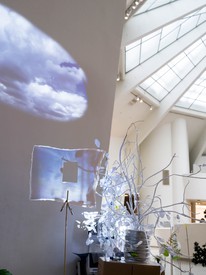
Sarah Sze: Timelapse
Francine Prose ruminates on temporality, fragility, and strength following a visit to Sarah Sze’s exhibition Timelapse at the Solomon R. Guggenheim Museum, New York.
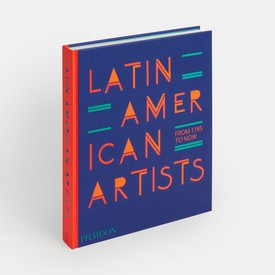
Latin American Artists: From 1785 to Now
To celebrate the publication of Phaidon’s new, expansive survey, we share an excerpt from Raphael Fonseca’s introduction and a few of the more than three hundred artists featured.
Douglas Gordon: if when why what
Douglas Gordon took over the Piccadilly Lights advertising screen in London’s Piccadilly Circus, as well as a global network of screens in cities including Berlin, Melbourne, Milan, New York, and Seoul, nightly for three minutes at 20:22 (8:22pm) throughout December 2022, with his new film, if when why what (2018–22). The project was presented by the Cultural Institute of Radical Contemporary Art (CIRCA) in conjunction with the exhibition Douglas Gordon: Neon Ark at Gagosian, Davies Street, London.
Sarah Sze: Timelapse
In this video, Sarah Sze elaborates on the creation of her solo exhibition Timelapse, on view through September 10, 2023. The show features a series of site-specific installations throughout the Solomon R. Guggenheim Museum, New York, that explore her ongoing reflection on how our experience of time and place is continuously reshaped in relationship to the constant stream of objects, images, and information in today’s digitally and materially saturated world. In Sze’s reimagination of the Guggenheim’s iconic architecture, designed in the 1940s by Frank Lloyd Wright, the building becomes a public timekeeper reminding us that timelines are built through shared experience and memory.
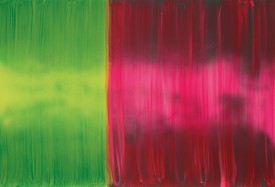
All I Wanted To Do Was Paint: A Conversation between Katharina Grosse and Sabine Eckmann
The exhibition Katharina Grosse Studio Paintings, 1988–2022: Returns, Revisions, Inventions premiered at the Mildred Lane Kemper Art Museum, Saint Louis, in September 2022. It continues its tour with presentations at the Kunstmuseum Bern, through June 2023, and the Kunstmuseum Bonn, opening in April 2024. To mark this momentous survey, the show’s curator, Sabine Eckmann, met with Grosse to discuss the evolution of her practice.
